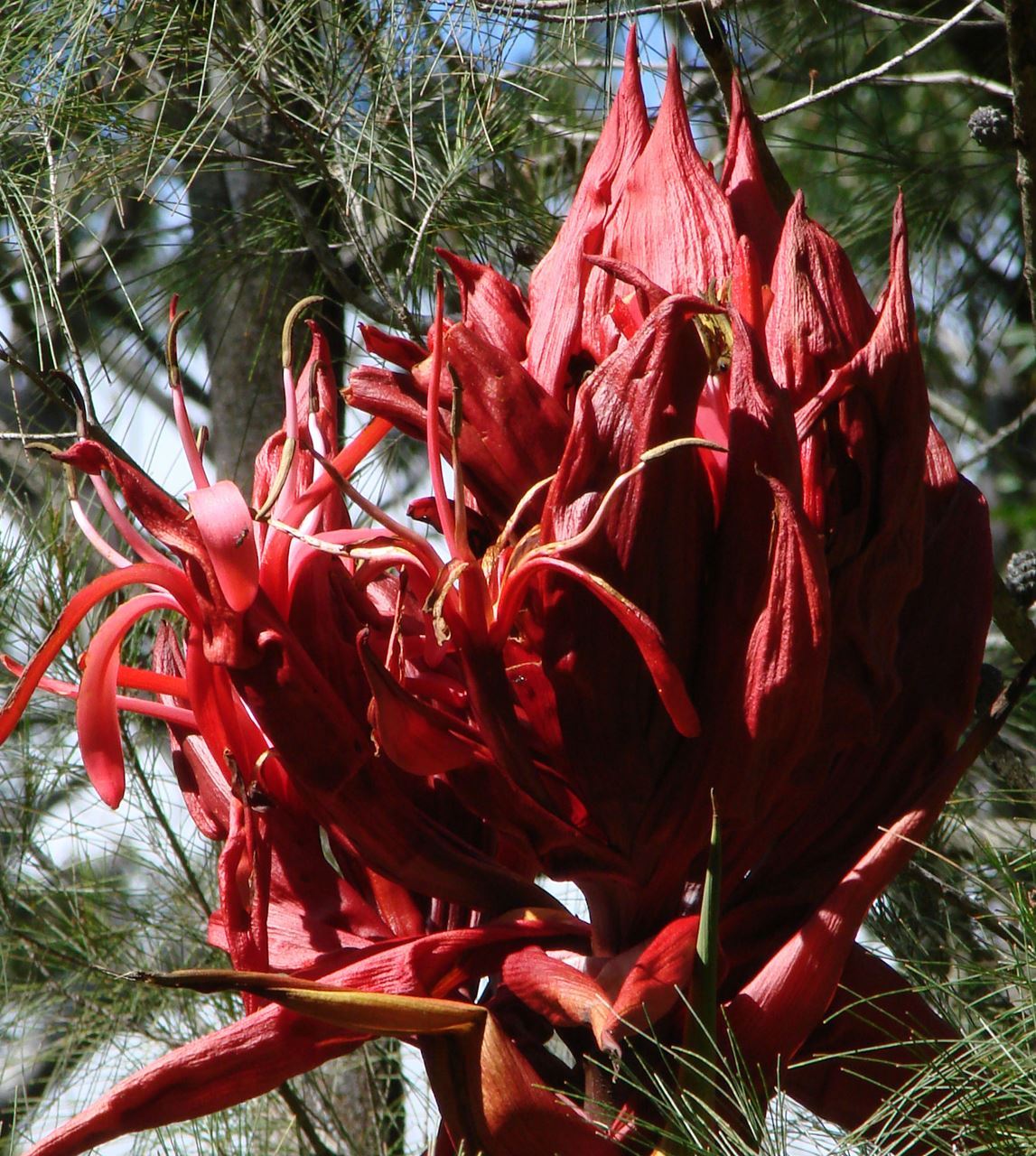You would think that for such an iconic plant as the Gymea Lily there would be plenty of information about it. But you would be wrong. The ecology of the Gymea Lily was first studied in 1928 but until recently little research has been done. In 2012 Sharon Bowen from the Dept. of the Environment & Heritage gave us a talk about her Masters thesis on the Gymea Lily and was able to share her knowledge with us.
The Gymea Lily is part of the Doryanthaecae family which is closely related to plants of the Agave family. Its botanical name is Doryanthes excelsa which is derived from ‘doratos’ which means a spear, and excelsa which means high or far seen – this refers to the tall flower spike.
The Gymea Lily has a strange distribution. It naturally grows along the coast of NSW from Corindi in the north to Wollongong in the south, however it is not common to all areas between these 2 places. Also there is a gap of 2 degrees latitude where no plants grow naturally (including between Port Jackson and Port Hacking).
This unusual distribution led Sharon Bowen to study the niche ecology of the Gymea Lily. She found that D. excelsa has specific habitat requirements relating to substrate, topography and climate. Fire frequency and intensity are also important.
Sharon observed that Gymea Lilies need moderately deep sandy, earthy soils, south to south-east facing slopes along creeks, gullies or sheltered plateau and ridges and grow in open dry sclerophyll forests which also support Angophora costata, Eucalyptus piperita, E. gummifera, E. sieberi or E. punctata. They also grow where Xanthorrhoea or Telopea are present and where there are moisture-loving groundcover species. Gymea Lilies are pollinated by honey-eating birds and bees and in order to attract these pollinators they have brightly coloured pinky-red flowers on tall flower stems.
To carry out her research Sharon chose two separate populations: She sampled those in the Dharug National Park (60km north of Sydney) and compared to samples in the Royal National Park (36km south of Sydney). She made comparisons between the 2 areas in terms of 1.vegetation community structure and floristry 2. physical and chemical characteristics of the soil 3. seed germinability and early seedling growth rate, and 4. morphogenetic measurements – number of leaves, leaf dimensions, plant dimensions etc. She considered that there may be a genetic difference between these two populations.
Sharon found that Gymea Lilies have a transient seed bank (ie once released the seeds are short-lived), but the seeds are viable and easily germinate. However, the seedlings are slow to grow, as is the adult plant.
The Gymea Lily also requires low nutrient soil with a low pH of 4.1. In her research, Sharon found that growth rate of seedlings was retarded at higher levels of NPK.
Sharon found that in response to fire the Gymea Lily is able to re-sprout if the top is damaged. However, due to its slow growth and production of flowers, if fires are too frequent it is unable to reproduce as often and this would reduce the genetic diversity of the population.
Sharon concluded that the environmental niche of the Gymea lily is defined by a narrow range of environmental parameters; it persists in the environment by the longevity of individuals; it is a ancient and relict species from a wetter climate but has evolved to cope with drought rather than frequent fire and so the populations are confined to the areas of less fire. Sharon found no differences in the phenotype (observable hereditary characteristics arising from the interaction with their environment) between the 2 populations. Since her research the genetic material from Gymea Lilies in both areas has been tested by another researcher who confirmed that the 2 populations have the same DNA and so are the same species.
Sharon gave a very informative talk which gave us better understanding of the Gymea Lily and why it is important to preserve this spectacular plant from threats such as urbanisation, frequent fire regimes, illegal harvesting of blooms for the floristry trade, and reduction in its genetic diversity.
